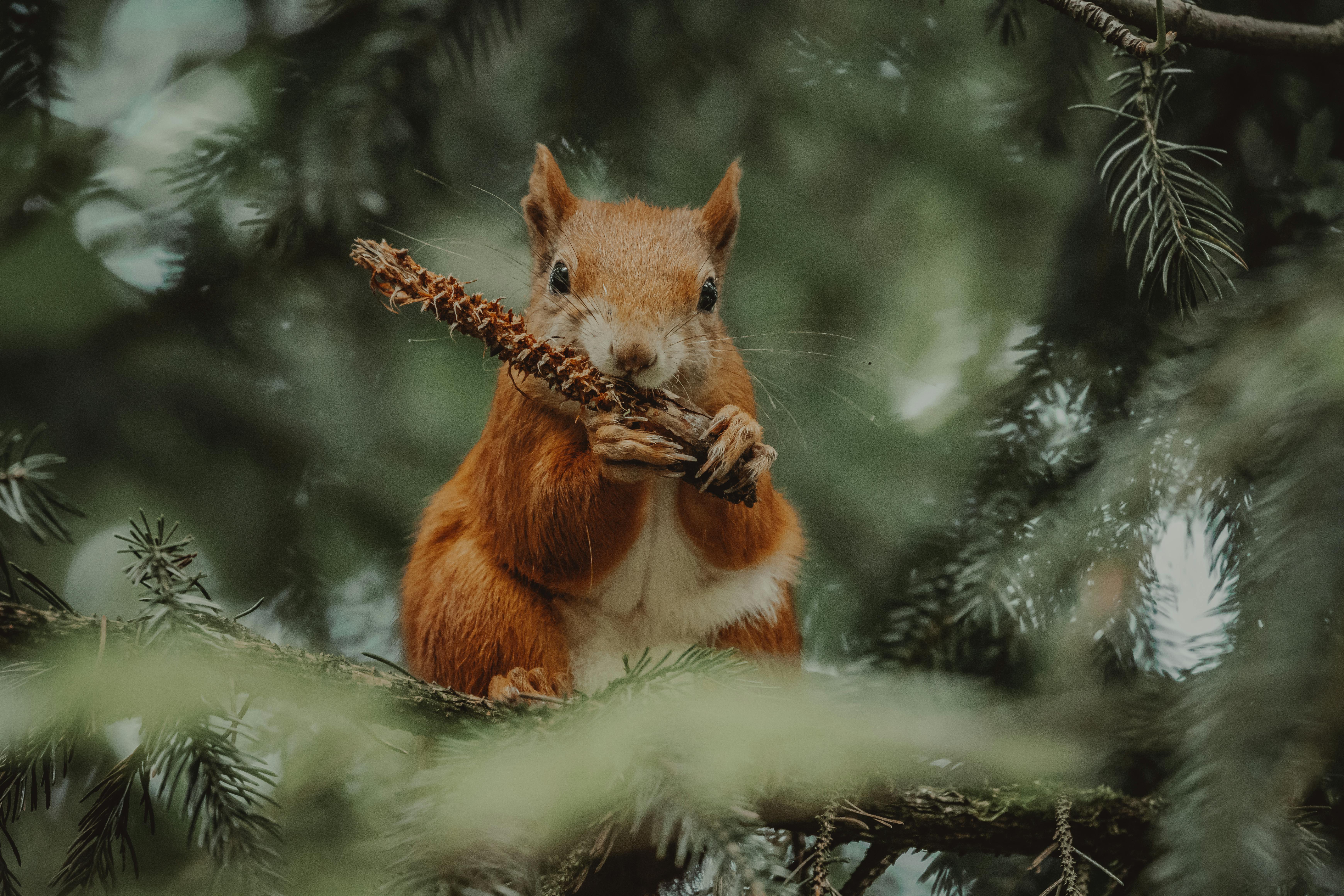Wild strawberries are a delicious and nutritious snack. They have a sweet, tart flavor and are packed with vitamins and minerals. As with any wild food, it is important to be sure they are safe to eat before consuming them. This article will discuss the safety of wild strawberries, how to identify them, and how to properly prepare them for consumption.Yes, wild strawberries are safe to eat. They do not contain any toxins and are generally safe to consume in reasonable quantities. However, it is important to make sure that the berries have been properly washed before consuming them.
What Are the Health Benefits of Eating Wild Strawberries?
Wild strawberries have a wide variety of health benefits due to its high content of antioxidants, vitamins, and minerals. The fruit is packed with Vitamin C, which helps boost your immune system and fight off common illnesses. It also contains Vitamin A, which is essential for eye health. Wild strawberries are also high in polyphenols, which have been linked to reducing inflammation and protecting against chronic diseases such as cancer and heart disease. Additionally, wild strawberries are a great source of fiber which helps improve digestion and can help control blood sugar levels. Finally, wild strawberries are a great source of potassium which helps regulate fluid balance in the body.
Overall, eating wild strawberries can provide you with many health benefits that may help improve overall wellbeing. The fruit is low in calories and packed with nutrients that can improve your health in numerous ways. Adding a handful of wild strawberries to your diet can be a great way to get more nutrients into your daily meals without adding extra calories or fat.
Can You Get Sick From Eating Wild Strawberries?
Eating wild strawberries can be a great way to enjoy the outdoors and get your daily dose of antioxidants. However, there is a risk of getting sick from eating wild strawberries, and it’s important to understand how to minimize this risk.
The first risk is that wild strawberries can contain harmful bacteria, such as E. coli and Salmonella, which can cause food poisoning. To reduce this risk, it’s important to only pick strawberries that are ripe and free of any visible signs of spoilage or damage. It’s also important to wash them thoroughly before consuming them. Additionally, it’s best to avoid eating any wild strawberries that have been sitting out in the sun for too long or that have been contaminated with animal waste or chemicals.
Another risk of eating wild strawberries is that they may contain parasites or diseases that could make you sick if consumed. To minimize this risk, it’s important to avoid picking any berries that are growing in water or on the ground near bodies of water where parasites or disease may be present. Additionally, it’s best to cook any wild berries before consuming them, as cooking destroys any potential parasites or diseases present in the berries.
Finally, some people may have an allergic reaction to wild strawberries due to their pollen content. If you are allergic to pollen, it is best to avoid eating wild strawberries altogether. Additionally, if you experience any symptoms after eating wild strawberries such as vomiting, diarrhea or abdominal cramps, seek medical attention immediately.
In summary, eating wild strawberries can be an enjoyable experience but there are risks involved which should not be taken lightly. It’s important to only pick ripe berries and wash them thoroughly before consuming them. Additionally, it’s best to avoid picking berries near bodies of water and cook any berries before consuming them in order to reduce the risk of getting sick from parasites or diseases present in the fruits. Finally, people who are allergic to pollen should avoid eating wild strawberries altogether as they may have an allergic reaction if exposed to the pollen content in the fruits.
What Does a Wild Strawberry Taste Like?
Wild strawberries have a unique flavor that many people find irresistible. They are sweet and tart, with a hint of citrus-like flavor. Unlike their cultivated counterparts, wild strawberries have a slightly more intense flavor that can be quite intense if eaten fresh off the plant. The taste of wild strawberries is often described as having notes of honey and citrus, with an undertone of earthiness. Some people also detect hints of vanilla or almond in the taste. When cooked, they become even sweeter and more concentrated in flavor.
Wild strawberries are incredibly versatile in cooking and baking applications. Their unique flavor pairs well with both sweet and savory dishes. The sweetness is perfect for making jams, jellies, compotes, and syrups. The tartness adds interest to salads, tarts, pies, and other desserts too. Wild strawberries can even be used in savory dishes like sauces or roasted vegetables to add complexity to the dish without changing the main flavor profile too much.
One thing to keep in mind when using wild strawberries is that they are generally smaller than cultivated varieties so you’ll need more of them to get the desired result when adding them into recipes or dishes. But don’t let that deter you from trying them! The intense flavor of wild strawberries will make any dish more interesting!
How to Identify Wild Strawberries
Wild strawberries can be found in many parts of the world, and they are a delicious and nutritious addition to any diet. Knowing how to identify them is the first step in harvesting them for your own use. Here are some tips for identifying wild strawberries:
Look for the distinctive heart-shaped leaves of wild strawberries. They are usually dark green on top and lighter green on the underside, with serrated edges. The leaves will often have three or five pointed lobes.
The flowers of wild strawberries are usually white or pale pink, with five petals and yellow centers. The flowers typically bloom in late spring and early summer.
The fruit of wild strawberries is small, usually no more than half an inch in diameter. It is bright red when ripe and has many tiny yellow seeds on its surface. The fruit ripens in late spring or early summer.
When looking for wild strawberries, it’s important to note that they grow in patches rather than singly like cultivated varieties do. Look for patches of plants that all have the same characteristics described above and you’ll be sure to find some wild strawberries!

How to Pick and Store Wild Strawberries
Picking wild strawberries is a fun and rewarding activity. It is important to know where to look, when to pick, how to pick, and how to store them. Wild strawberries can be found in fields, forests, meadows, or even growing in cracks between sidewalks or other hard surfaces. The best time to pick wild strawberries is in the early morning when the berries are at their juiciest and most flavorful. When picking wild strawberries, it is important to be gentle as the berries are delicate and can easily be crushed or bruised. Make sure to check for any signs of decay before harvesting and discard any that have gone bad.
Storing wild strawberries requires a bit of care since they do not last very long once picked. The best way to store them is in an airtight container lined with a paper towel. This will help keep moisture away from the berries and prevent them from getting soggy or moldy. Keep the container in a cool place until you are ready to use your wild strawberries in a recipe or simply enjoy them as-is!
How to Prepare and Cook Wild Strawberries
Wild strawberries are a delicious treat for any season. They are sweet, tart and full of flavor. If you’re lucky enough to find wild strawberries, there are some simple steps to take to prepare and cook them.
The first step is to gently wash the strawberries in cold water. Be careful not to crush or break them as they are very delicate. Once the berries are washed, carefully inspect them for any leaves or debris that may have attached during harvesting.
Once the strawberries have been washed and inspected, they are ready for cooking. There are several methods that can be used including baking, grilling or sautéing. For baking, spread the berries on a baking sheet and sprinkle with sugar if desired. Bake at 375°F for 8-10 minutes until heated through. Grilling is also an option; spread the berries over a lightly-oiled griddle or grill pan and cook over medium heat for approximately 6 minutes until softened and lightly browned.
Sautéing is another great way to cook wild strawberries; simply melt butter in a skillet over medium heat and add the prepared berries in a single layer. Cook until they become soft and lightly browned; this should take about 3 minutes per side. The cooked fruit can be enjoyed as is or used as a topping for ice cream, pancakes or waffles.
Wild strawberries make an excellent addition to any meal or snack time treat! With just a few simple steps, you can enjoy these sweet little gems all year round!
Delicious Recipes Using Wild Strawberries
Nothing beats the flavor of wild strawberries! These little gems are bursting with flavor and can be used in a variety of recipes. From pies to jams, muffins to sauces, wild strawberries can take your cooking to the next level. Here are some delicious recipes that use wild strawberries to create amazing dishes.
Strawberry Pie
This classic dessert is not only easy to make but also incredibly delicious. Start by making a crust from your favorite recipe or store-bought crust. Then, mix together 2 cups of fresh wild strawberries, 1 cup of sugar, 2 tablespoons of flour, 1/4 teaspoon of cinnamon and a pinch of salt until blended. Pour the mixture into the piecrust and bake in the oven for about 45 minutes at 350°F. Once cooked through, let cool before serving with ice cream or whipped cream.
Strawberry Jam
Making homemade jam is a fun way to use up an abundance of wild strawberries. Start by washing and hulling about 5 cups of fresh berries. Mash them until they form a chunky puree and place in a large pot on medium-low heat. Add 3/4 cup of sugar and stir until dissolved. Simmer for about 30 minutes while stirring occasionally until thickened. Ladle into mason jars, seal tightly and refrigerate for up to three weeks or freeze for up to six months for later use.
Strawberry Muffins
These strawberry muffins are perfect for breakfast or snacks throughout the day! Preheat oven to 375°F and spray 12 muffin tins with cooking spray or line with paper liners. In a medium bowl whisk together 1 1/2 cups all-purpose flour, 3/4 cup sugar, 2 teaspoons baking powder and 1/4 teaspoon salt; set aside. In another bowl mix together 1 egg, 1/2 cup milk, 6 tablespoons melted butter and 1 teaspoon vanilla extract; stir until blended then add dry ingredients all at once stirring just enough to moisten dry ingredients (do not overmix). Gently fold in one cup chopped fresh wild strawberries then spoon into prepared muffin tins filling each two-thirds full; bake 18 minutes or until golden brown on top then cool completely before serving.

Conclusion
Wild strawberries are not only safe to eat but also a healthy and delicious treat. They are an excellent source of essential vitamins and minerals that can help boost your health. They also provide a great flavor to many dishes, both sweet and savory. Wild strawberries can be used in a wide variety of recipes or enjoyed fresh on their own. No matter how you choose to enjoy them, wild strawberries can be an enjoyable and nutritious addition to your diet.
Overall, wild strawberries are a great food choice for those looking for a healthy snack or sweet treat. With their naturally sweet flavor, high nutrient content, and endless culinary possibilities, there’s no reason not to give them a try!



